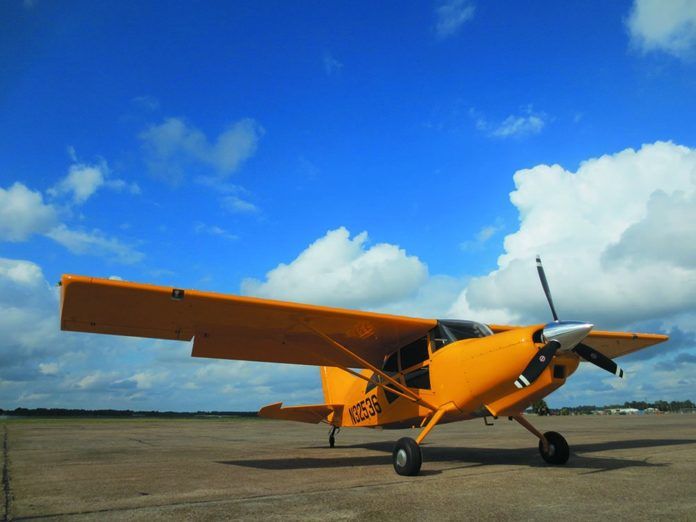Maule has been building tailwheel STOL airplanes so long, one can’t help wondering if the first ones were open-cockpit. In production since certification of the original M-4 in 1962, it’s nearly impossible to find a backcountry airport or airstrip that doesn’t have at least one Maule parked on it.
Remaining very much a family business—president Brent Maule is the grandson of founder B.D. Maule—the company gradually expanded its line to include nosewheel models and engines that range from 180 to 260 HP while sticking with a steel-tube and Ceconite fuselage, but going to all-metal wings. There are only two versions of the fuselage, the current four-place-plus-baggage fuselage of the MX-7 and MXT-7 models and the slightly taller and deeper fuselage that has room for a fifth seat in the baggage area of the M-7, MT-7 and M-9 models.
The practice of sticking with what has worked and only making design changes after due deliberation, are two reasons Maule has managed to keep the prices of its new airplanes among the lowest on the market—as Brent Maule told us, “On a per-seat basis, our airplanes are the least expensive production STOL planes you can buy.” The company’s native conservatism means competitive pricing, but it also means that those who want a glass panel and the latest gee-whiz gimmicks will have to look elsewhere.
We reviewed the M-7-235C. Equipped with a carbureted, 235-HP Lycoming O-540-B4B5, it is the most popular of the Maule line. It can use auto fuel, which makes it in demand throughout the world because avgas is more and more difficult to find. Brent Maule told us that some 80 percent of its airplanes are now exported.
Steel Tube
The welded 4130 chromoly steel-tube fuselage and tail Maules are built by hand on an assembly line in the company’s Moultrie, Georgia, factory. All structural metal receives corrosion proofing and the fuselage members and engine mounts are powder coated. The aluminum spring main gear M-7-235C is designed for backcountry operation; the brake lines are routed through the gear legs—referred to as “gun drilled” by the factory—to protect them from getting ripped off on unimproved strips. The lines are only exposed at the wheels where they tie into the dual-caliper disk brakes.
With a current gross weight of 2500 pounds and an empty weight of about 1700 pounds, depending on equipment, you can plan on an 800-pound useful load for an M-7-235C—for the next few months. If all goes according to plan, Brent Maule told us, Maule will receive a retroactive STC to bump the gross weight to 2800 pounds—the same as the M-7’s beefed-up big brother, the M-9.
M-7s coming off the assembly line have been bulked up during production with the same structural enhancements in the M-9, including thicker gear legs, reinforced tail, stronger components in the wing spar and roots and some thicker wing skins. The STC, which should apply to the last several M-7s to come off the line, will increase the useful load to 1100 pounds. With a full load of usable fuel—85 gallons in four wing tanks—that means 590 pounds can be carried in the cabin. Currently, a full load of fuel—a little over seven hours to dry tanks, burning 12 GPH—limits the cabin load to 290 pounds.
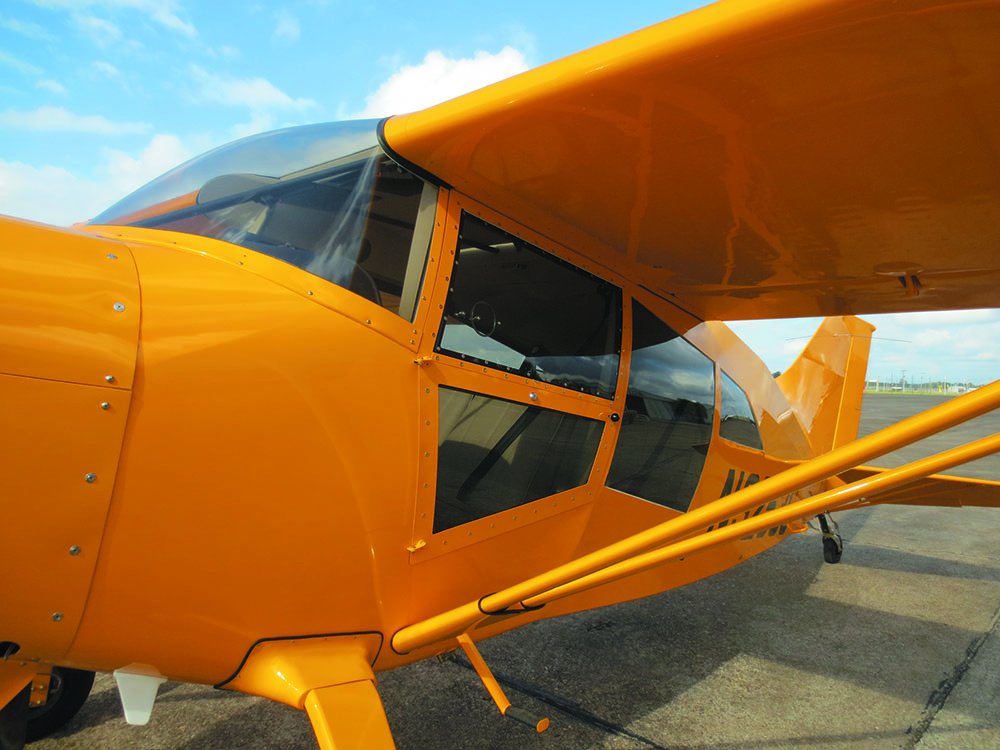
The M-7-235C is designed to allow a fifth seat in the baggage compartment, although we found that a pilot must be careful when using it to keep the center of gravity forward of the aft limit. We like the flexibility inherent in being able to carry a lot of fuel when needed for trips into the backcountry or to fill up the cabin for trips of one or two hours.
The cabin size is adequate rather than commodious, so when it’s full of people, we doubt they are going to want to sit for more than a couple of hours.
Cabin
We like the improvements Maule has made to the cabin itself, including optional leather upholstery. The airplane we flew had the Observer package, which seemed to put windows everywhere we looked—a major benefit for an airplane that otherwise has poor visibility, as the pilot’s head is right in the wing root. We were impressed with the fit and finish of the entire airplane.
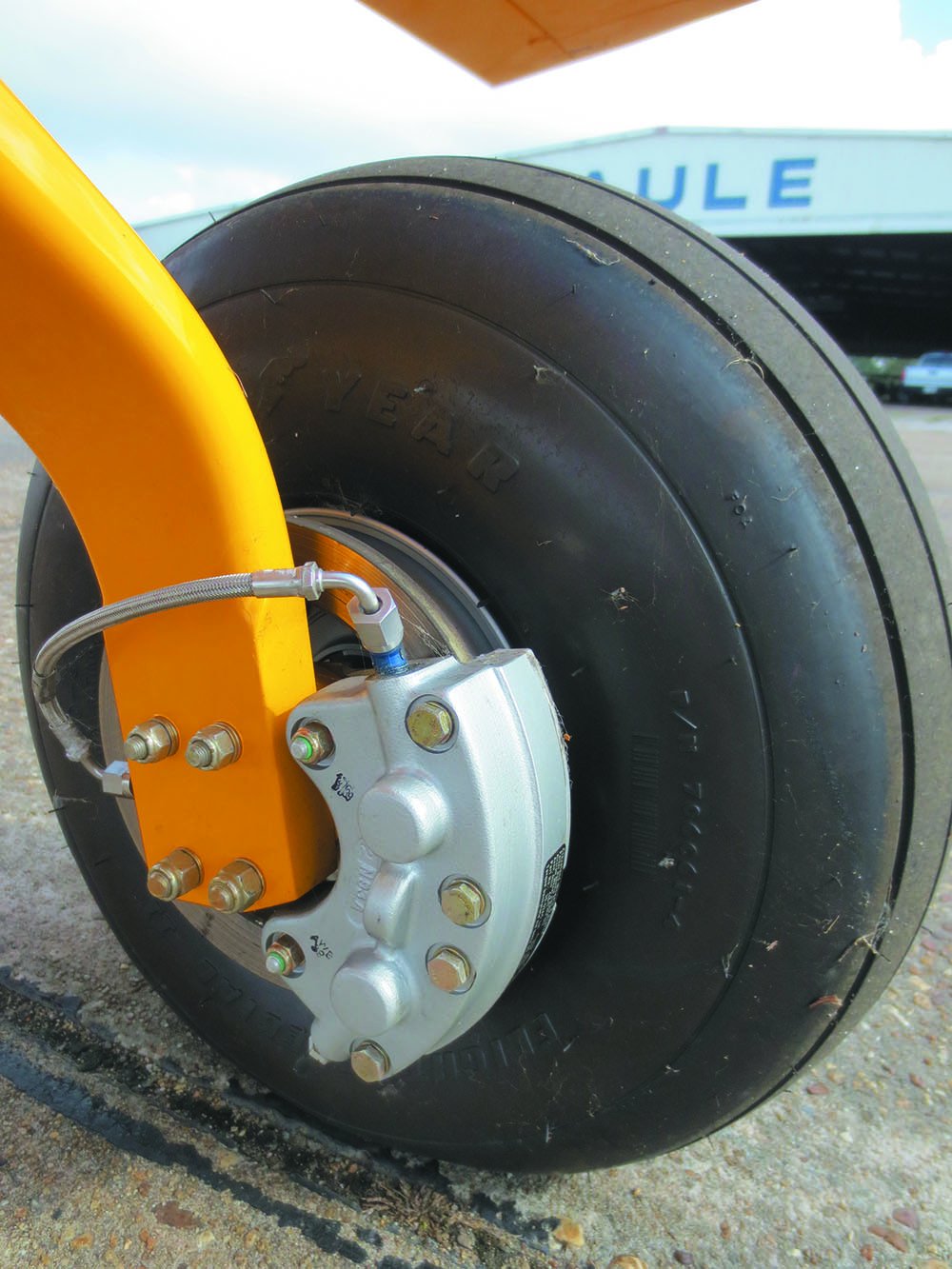
There are four cabin doors. One is on the left for the pilot, with three on the right, at the copilot seat, rear seat and aft baggage/fifth seat area—the entire right side of the cabin opens up.
The backseat is adjustable through two positions—and can be removed in under a minute. The copilot’s seat comes out as well, creating a freighter that can carry long items.
We noted that one long-time complaint about Maules—the cabin door latches—has been fixed. The new latches are easy to operate and provide a definitive lock. Gas cylinders ease the process of opening and closing the front door windows—they can be opened in flight up to 109 knots. We like that the airplane can be flown with either or both of the front doors off.
The panel is metal with sharp angles, so a good restraint system is important. The standard system is three-point. That meets certification requirements, but with the relatively high landing accident rate of tailwheel airplanes, especially those in regular use in the backcountry, we recommend buyers opt for the better, four-point system that is an option. We’d like to see Maule make it standard.
The 85-gallon fuel system uses four tanks. The engine can draw from either or both of the inboard tanks. Electric transfer pumps are used to move fuel from the outboard to inboard tanks. Transferring fuel too soon can result in overfilling the inboard tanks and venting fuel overboard. Transferring a full tank takes about 45 minutes. While the fuel system has some complexity, our last review of Maule accidents in our Used Aircraft Guide did not indicate that the series had an unusually high percentage of fuel-related accidents.
The Approved Flight Manual for the M-7-235C contains only the basics required by the FAA. There is no performance data. The pilot has to reference the Lycoming engine manual to get power settings and fuel consumption and then go fly the airplane and see what it does. It also means the pilot has to do some homework to determine takeoff and landing performance. We’re not crazy about the lack of takeoff and landing performance data.
The airplane we flew was equipped with VGs. Brent Maule and his father Ray told us that VGs reduce stall speeds on the various Maule aircraft an average of seven knots with the flaps up and three with the flaps down. Consequently, VGs have been long been offered as an option.
Flying It
Preflight is conventional. There are two fuel quick drains just aft of the step on the left side of the fuselage and one at the low point of each of the four fuel tanks. The only rapid access to the cowling is the oil filler/dipstick door on top, so it’s not possible to get a good look at the engine room.
Ground handling of the M-7-235C is about as good as it gets for tailwheel airplanes, so long as there is not a strong wind. The airplane tracks we’ll and most turns can be initiated and stopped with rudder alone. With standard tires—larger bushwheels are an option—visibility over the nose, other than the 1:00 to 2:00 position, is good.
The maximum demonstrated crosswind is 12 knots. In our Used Aircraft Guide on tailwheel Maules in the June 2013 issue, owners told us that the number is to be respected.
The M-7-235C has five flap positions. The completely retracted position is a negative seven degrees, which Maule calls the reflex position. It is used to get extra speed in cruise. The first detent is zero degrees, the second is 24 degrees—used for takeoff—and the last two are at 40 and 48 degrees. Takeoffs are normally made with 24 degrees.
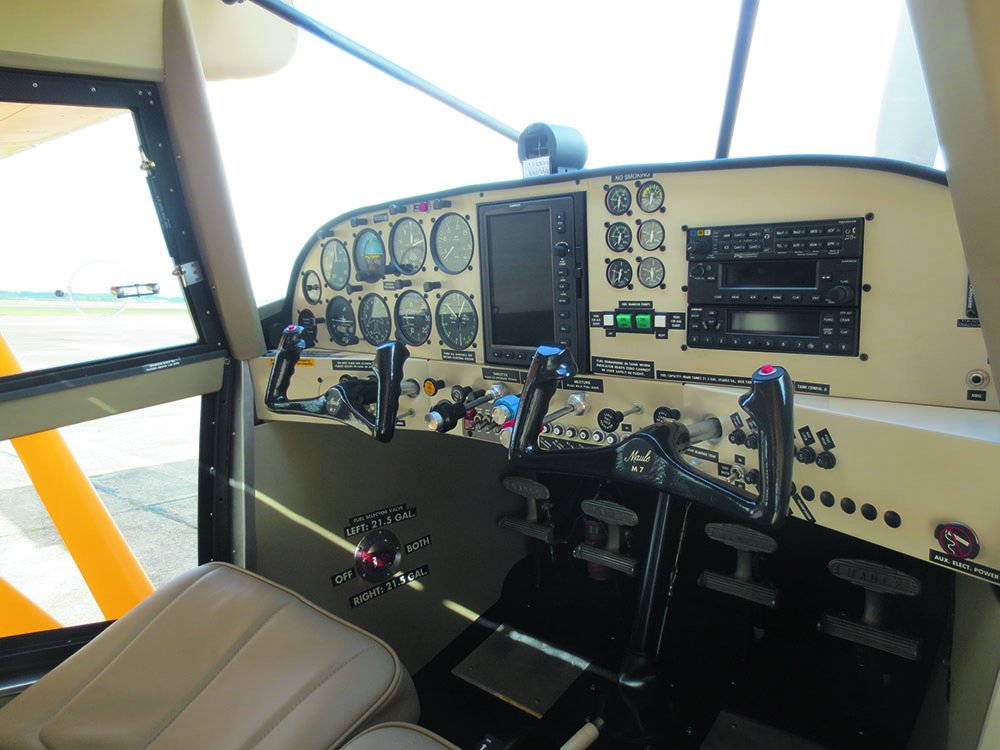
Rather than taxi nearly a mile from the factory to the paved runway, we took off from the ramp in front of the factory—a regular procedure, we learned. Loaded to 2300 pounds, takeoff roll on a calm, 80-degree day, was on the order of 600 feet. No effort was made to make a short takeoff, the airplane flew itself off the ground from a tail-low attitude at 45 knots. Once the flaps were up, the rate of climb stabilized at 1200 FPM.
The elevator trim rate and effectiveness is such that it is easy to trim the airplane for a given airspeed but not so powerful that an out-of-trim situation can challenge the pilot to keep things collected. For STOL operations and go-around from low speeds with full flaps, we think this can be a safety-of-flight issue and we like the trim on the Maule. There is little trim change with flap deflection, other than when going from zero degrees to the negative seven-degree reflex position.
Steep turns, with rapid roll rates into and out of the turns were without drama. Dropping some flap allowed the airplane to nearly pivot. The power-off stall, with full flaps, broke with a slight roll to the left at 43 knots. At full power, flaps up, we saw 34 knots indicated without getting a break or mush.
For STOL airplanes, aileron control and the skill level necessary to coordinate turns at very slow speed are safety-of-flight items, in our opinion. We flew the M-7 at 40-45 knots indicated with full flaps and rolled rapidly in and out of steep banks. The ailerons remained very effective, with little slop or delay. Maules have a rudder trim tab that is actuated by movement of the ailerons to assist in coordinating turns at low speeds.
We found the work load involved with keeping the ball in the center of the race to be noticeably lower than STOL airplanes with high levels of adverse aileron yaw such as the Super Cub or Husky. We consider ease of coordination a safety factor when maneuvering at low speed as an inadvertent stall is bad enough—a cross-control stall almost guarantees a significant wing drop and incipient spin, dramatically increasing the altitude required for a recovery.
Even though there is no cruise performance material for the M-7, we were curious. The airplane was new enough that the engine had not been broken in, so we kept it at 25 inches and 2500 RPM, for much of our flight—a setting over 75 percent power. At 4000 feet, that generated a true airspeed of 138 knots with the flaps at zero and 143 knots with the flaps reflexed. Operating the engine at a more realistic 65 percent power should generate cruise speeds more in the 125-knot range, consistent with what we’ve been told by users.
Landing
With full flaps, the airplane is rock solid on the approach, so precise speed control is not difficult, especially if trim is used liberally. The Vernier throttle takes some getting used to—normal operation involves turning it in or out; making a large power change quickly requires pushing a button before sliding the throttle. Watching videos of experienced Maule pilots touch down, snap the flaps up and stop in a few airplane lengths indicate to us that they have no problem with a Vernier throttle.
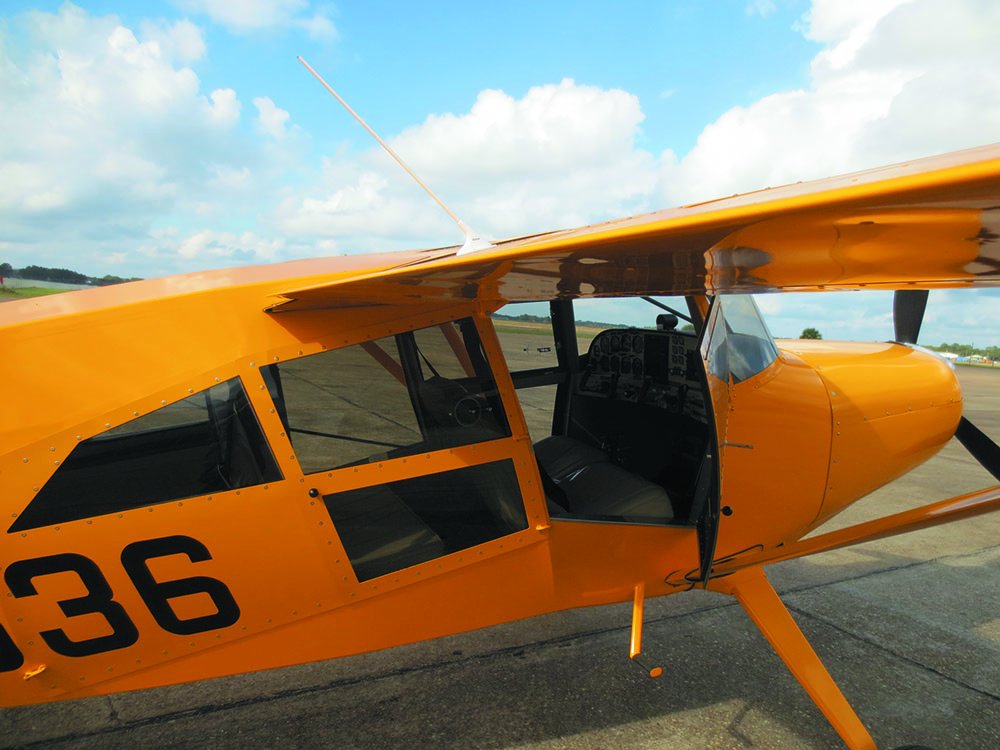
One of the problems faced by STOL-capable aircraft pilots on approach is a nose-high attitude that blocks the view of the touchdown area—which can be a serious problem in the backcountry. One of the best airplanes for over-the-nose visibility on a STOL approach and landing is the Peterson 260/King Katmai mod of the Cessna 182. While not as good as the Peterson 260 series, we found the Maule M-7 to have better-than-average over-the-nose visibility on a short field approach.
A three-point touchdown requires full aft yoke—as is the case with most tailwheel airplanes. However, it seems to be accomplished slightly more easily than in other tailwheel machine. Rollout requires what we considered to be the normal amount of attention for a tailwheel airplane.
The base price for the M-7-235C is $250,000 and includes a full-gyro panel and VFR radio package—it’s not a stripped airplane. The airplane we flew had a slightly more advanced VFR radio package, VGs, the Observer package and other options that brought the price up to $320,000, an amount we consider low for a highly capable, four-place airplane.
Conclusion
We think the M-7-235C is an airplane that does many things well, including cruise at a reasonable speed. Tailwheel handling is, in our opinion, better than average, but still requires pilot proficiency. We like that for about the price of the two-place backcountry airplanes, a buyer can take more people or stuff and go into the same strips. We think the anticipated 300-pound gross weight increase will add substantial value to an already good machine.

